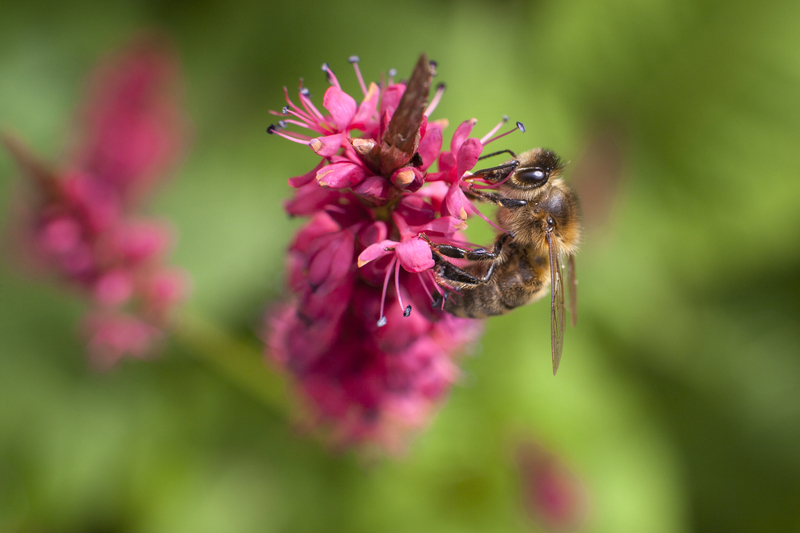Embrace the Vertical Gardening Revolution
Posted on 26/06/2025
Embrace the Vertical Gardening Revolution: Transform Your Space and Sustainably Garden Upwards
Are you curious about how to maximize your green thumb--no matter how much space you have? Welcome to the vertical gardening revolution. As urban areas expand and residential gardens shrink, people worldwide are turning to vertical gardens as an innovative, sustainable solution. If you're seeking fresh inspiration, practical advice, and all you need to know about vertical gardening, this comprehensive guide is for you!
What Is Vertical Gardening?
Vertical gardening is the art and science of growing plants vertically instead of horizontally. Rather than planting in the ground, vertical gardens--also called living walls, green walls, or vertical planters--stack plants upwards. They use structures like walls, frames, trellises, or shelves, maximizing available growing space and transforming even the smallest patios, balconies, or indoor nooks into lush oases.
Brief History of Vertical Gardens
While vertical gardening might sound modern, its roots go back centuries. From the ancient hanging gardens of Babylon (one of the original Seven Wonders of the World) to Italian trellises and French espaliered fruit trees, humanity has long found ingenious ways to garden above ground. Today, cutting-edge designs and materials have launched us into a true vertical gardening revolution.

Why Join the Vertical Gardening Revolution?
- Save Space: A vertical garden turns small, unused areas--think balcony rails, kitchen walls, or fences--into productive, breathtaking green zones.
- Enhance Air Quality: Plants in vertical gardens and living walls help filter out pollutants and add fresh oxygen indoors and out.
- Boost Mental Wellbeing: Being surrounded by greenery can reduce stress, foster creativity, and make your home or workspace inviting.
- Sustainable Food Production: Grow your own lettuce, herbs, or strawberries--even in the tightest city apartment!
- Aesthetic Appeal: Transform bland brickwork or pale indoor walls with a vibrant tapestry of color and texture.
Choosing Your Vertical Gardening System
The beauty of the vertical gardening trend lies in its flexibility. Whether you have a sprawling backyard or a one-bedroom apartment, there's a method that's perfect for your environment and style. Here's a look at some popular options:
1. Living Walls or Green Walls
Living walls are stunning, large-scale vertical gardens with built-in irrigation, often used to envelope entire exterior or interior walls in greenery. These can be custom-designed or bought in modular kits. Some living walls are hydroponic (growing in nutrient-rich water) rather than in soil, allowing for even more flexibility.
2. Trellises and Climbing Supports
For those with yards or fences, trellises and arbors are classic vertical gardening choices. They're perfect for growing climbing plants such as beans, peas, passion flowers, or roses.
3. Planter Pockets and Wall-Mounted Pots
One of the most accessible entry points to the vertical gardening trend is a wall-hanging garden. Use fabric planter pockets, recycled bottles, wooden pallets, or sturdy racks to cultivate herbs, succulents, or flowering annuals.
4. Stackable and Modular Planters
For balconies and patios, stackable planters allow you to grow upwards rather than outwards. These units come in various sizes and materials and can be easily moved or reconfigured.
How to Start Your Own Vertical Garden
1. Assess Your Space
- Determine the amount of vertical and horizontal space available.
- Look for strong, stable surfaces--walls, fences, railings, or freestanding structures.
- Consider sunlight, rainfall, and wind exposure for your chosen area.
2. Select the Right Vertical Gardening System
- For indoor gardening or small spaces, try mounted pockets or stackable pots.
- For outdoor projects, go for trellises or living walls with irrigation systems.
- If you're renting, opt for systems that won't damage walls or are easily portable.
3. Choose Suitable Plants
Not all plants thrive in vertical gardens. Choose species that are:
- Lightweight and have shallow roots (herbs, lettuces, succulents, or ferns are ideal).
- Climbing (beans, peas, jasmine, or morning glory for trellises).
- Trailing (strawberries, oregano, English ivy for hanging gardens).
4. Plan for Watering and Drainage
Vertical gardens often require different watering techniques than conventional beds:
- Install drip irrigation or self-watering systems for larger or hydroponic walls.
- Ensure your indoor planters have trays to catch excess water and prevent damage to surfaces.
- Group plants with similar moisture needs together.
5. Set Up and Maintain
After installation, regular maintenance ensures your vertical garden thrives:
- Water as required--vertical gardens tend to dry out faster than traditional gardens.
- Fertilize with a liquid feed if growing edibles or flowering plants.
- Prune to keep growth in check and replace plants that struggle over time.
Great Plant Choices for Every Vertical Garden
Edibles
- Herbs (basil, parsley, thyme, cilantro, mint)
- Leafy greens (lettuce, spinach, arugula, baby kale)
- Strawberries
- Small peppers or cherry tomatoes (in large pockets)
Ornamentals
- Succulents (sedum, echeveria, hens and chicks)
- Trailing flowers (petunias, nasturtiums, lobelia)
- Ferns (maidenhair, Boston, bird's nest)
- Vines (English ivy, pothos, philodendron, tradescantia)
The Future of Urban Gardening Is Vertical
The vertical gardening revolution is more than just a trend--it's a smart response to the challenges of urbanization, climate change, and food security. Vertical gardens help reduce urban heat, filter toxins, and even provide habitats for pollinators. Imagine entire city skylines draped in vibrant green walls and balconies overflowing with fresh produce: that's the exciting, sustainable future we're building together!
Innovative Solutions for Climate and Community
Cities around the world are incorporating living walls and vertical food gardens into new constructions, schools, and public spaces to create healthy, beautiful, and productive environments. Urban farming entrepreneurs are adopting hydroponic towers and massive green facades to grow food sustainably in the heart of the city.
Embrace the Vertical Gardening Revolution: Tips for Success
- Start Small: Experiment with a few easy-care plants like herbs on your kitchen wall or balcony before expanding.
- Use Recycled Materials: Repurpose old shoe organizers, wooden pallets, or plastic bottles for budget-friendly, eco-conscious vertical planters.
- Mix and Match: Combine edible and ornamental plants for year-round beauty and productivity.
- Think About Microclimates: Position plants that love sun in the highest, most exposed spots; shade lovers go lower down or in less direct light.
- Keep Learning: Join online forums, local gardening clubs, or follow vertical garden innovators for inspiration and troubleshooting advice.
Common Challenges--And How to Overcome Them
- Watering woes? Install self-watering planters or set reminders to check for dryness.
- Structural concerns? Always anchor heavy green walls securely and consult with a professional for large installations.
- Pest problems? Use natural pest repellents and check your plants regularly.
- Sunlight limitations? Choose shade-tolerant varieties or supplement with grow lights indoors.

Final Thoughts: Why You Should Join the Vertical Gardening Revolution Today
The vertical gardening revolution is transforming the way we connect with nature, grow food, and beautify our surroundings--making it easier and more rewarding than ever. Whether you're a seasoned gardener or a beginner, embracing vertical gardening can unlock a new dimension of creativity, sustainability, and self-sufficiency in your home or community.
So, why wait? Grab your seeds, unleash your vision, and become a part of the green movement that's changing the world--one wall at a time. Transform your space and embrace the vertical gardening revolution today!
Frequently Asked Questions
- What plants are easy for beginner vertical gardeners? Herbs (basil, parsley, chives), succulents, and some leafy greens are hardy and thrive in vertical systems.
- Do vertical gardens need special soil? Not always, but lightweight potting mixes with good drainage are best. For hydroponic vertical gardens, no soil is needed--just nutrient solutions.
- How do I water a vertical garden? Water from the top and let it filter down, or install drip irrigation. Avoid overwatering--vertical planters can drain quickly.
- Can I install a living wall indoors? Absolutely! Make sure you have a waterproof barrier and regular misting system, or choose plants that thrive on regular hand-watering.
Additional Resources on Vertical Gardening
- Gardeners.com Vertical Gardening Guide
- Vertical Gardening Systems
- Royal Horticultural Society: Vertical Gardens
Ready to embrace the vertical gardening revolution? With practical tips, endless inspiration, and a little ingenuity, anyone can transform their space and make the world a greener place--one plant at a time.

